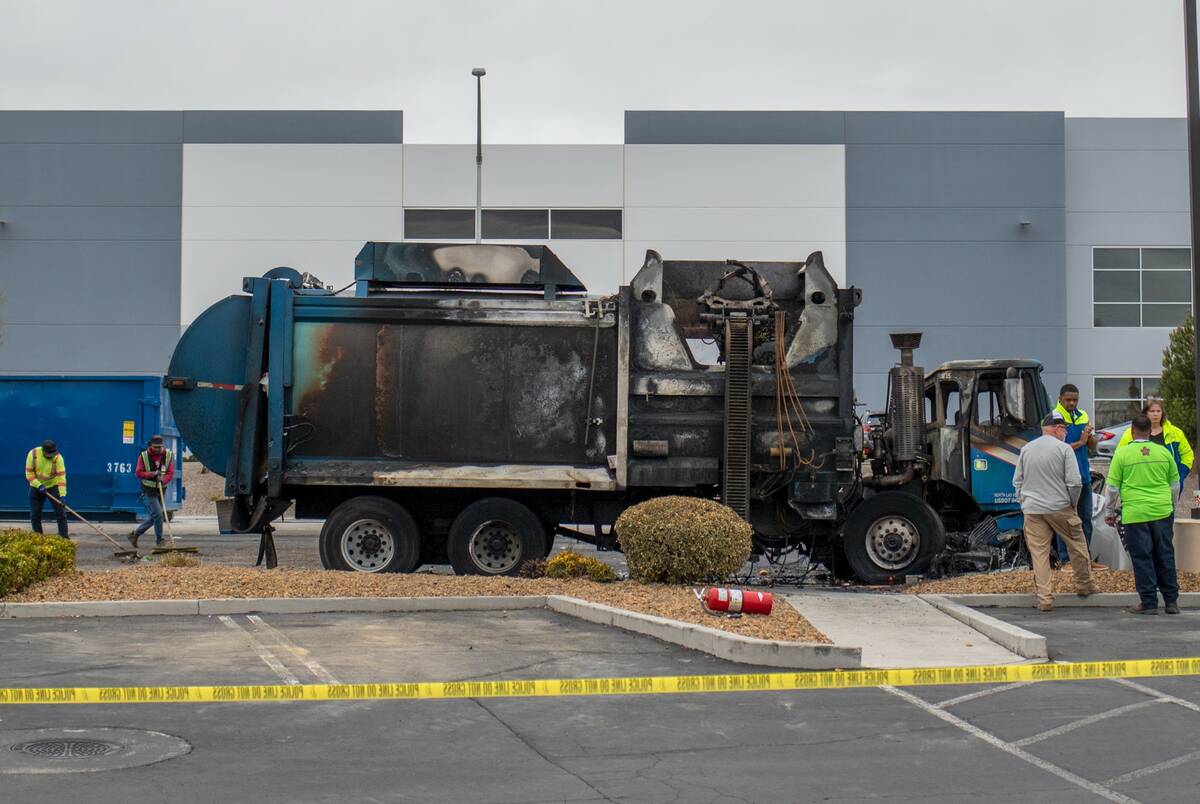100 deadliest days: ‘A critically dangerous period’ on Nevada roads
Memorial Day is recognized as the unofficial start of summer, a time when motorists head out on day trips, scenic drives and vacations. But it’s also known for something much less appealing — the beginning of the 100 deadliest days for drivers.
“The 100 Deadliest Days is a critically dangerous period on our roadways,” Nevada Office of Traffic Safety spokeswoman Anita Pepper said. “The risk extends beyond drivers to include other vulnerable roadway users such as pedestrians, motorcyclists and roadway workers.”
Through April, 133 traffic-related deaths have occurred in Nevada, 96 in Clark County. Both mark slight decreases from 2024.
“Speeding, impaired driving and distracted driving continue to needlessly claim lives on our roads,” Pepper said. “It is imperative that every road user adopts and maintains safe driving habits. Whether heading to a summer gathering or embarking on a road trip, the message is clear: Arriving late is always better than not arriving at all.”
The days between Memorial Day and Labor Day have historically been some of worst for fatal crashes in Nevada, according to Nevada Zero Fatalities.
Teen drivers are especially vulnerable over that span. When they are out of school and celebrating summer break, they are three times more likely to be involved in a fatal crash. Vehicle crashes are the leading cause of death of teenagers in America, Zero Fatalities said.
Safe driving tips
Parents of teen drivers and the young motorists themselves should review the following driving practices to ensure a safe summer of driving is had by all.
Don’t drive under the influence: Whether it’s use of drugs or alcohol, no one under the influence should ever get behind the wheel. Between 2018 and 2022 in Nevada, 51 percent of all fatal crashes had impairment involved. Despite being under the legal drinking age, 30 percent of drivers between ages 15 and 20 who died in a car crash had a blood alcohol concentration over the legal limit.
Always buckle-up: Simply put, seat belts save lives. Any occupant in a vehicle, whether in the front or back seats, should always wear a seat belt. That act takes only a second and is the most effective measure to save a life during a serious crash.
Stay focused: Drivers, especially teens, should keep their eyes on the road at all times while driving. Staying off smart phones, eating food or applying makeup are bad decisions behind the wheel. Drivers should follow the posted speed limits, keep a close eye on all road signs, traffic signals and stop signs, and also give plenty of room between the car they are operating and any vehicle in front of them.
Parents’ driving behaviors often can be mimicked by their children, so it’s important for parents to set a good example by developing safe-driving habits and demonstrating them by driving the way you want your teen to drive.
Talking to your teens and reminding them daily about the importance of being safe behind the wheel will help increase the potential for them to develop safe-driving habits. Giving teens refresher courses in defensive driving techniques can also keep the ideas fresh and make them become more of an instinct as teens continue to progress in their driving.
Motorcycle safety
The start of summer and warmer weather also brings out more motorcyclists, who often take rides along scenic routes.
Motorcyclist deaths are up 39 percent in Nevada this year through April compared with deaths in the first four months of 2024. Thirty-two fatalities occurred through April, compared with the 23 seen last year. In Clark County, 25 motorcyclists died through April of this year, up 25 percent from the 20 seen through the first four months of 2024.
Keeping such vulnerable road users safe is important for motorists to keep in mind.
“Motorcyclists, unlike those in passenger vehicles, do not have the protection of an enclosed structure,” Pepper said. “In 2021, motorcycles represented only 3.5 percent of registered vehicles but were involved in 14 percent of all motor vehicle fatalities.”
A popular area in Southern Nevada for such motorcycle rides is Lake Mead National Recreation Area.
With May being Motorcycle Safety Awareness Month, park officials are pushing the “Different Road, Different Ride” campaign, to highlight the unpredictable roads around the lake.
Riding through the Lake Mead area offers views of the water, desert vistas and winding roads, but those conditions can prove tricky for riders, especially those unfamiliar with the area.
“Riding conditions here change quickly — unexpected curves, changing weather, wildlife crossings, distracted drivers,” park officials said in a statement. “We’re asking riders to slow down, stay alert, and ride like a tortoise.”
With roads in the recreation area constructed to be as minimally invasive to the natural environment as possible, riders should always brace for the unexpected.
Lake Mead riding safety tips
Park officials warn motorcyclists to be prepared for:
— Tight curves that often appear suddenly after straightaways
— Limited shoulder space with little area for riders to correct themselves if they go off the road
— Wildlife on or near the road or crossings, including the desert tortoise, a threatened species that is native to the lake area
Contact Mick Akers at makers@reviewjournal.com or 702-387-2920. Follow @mickakers on X. Send questions and comments to roadwarrior@reviewjournal.com.


















